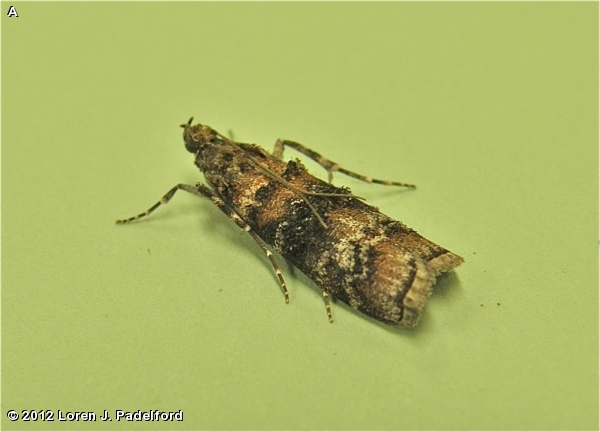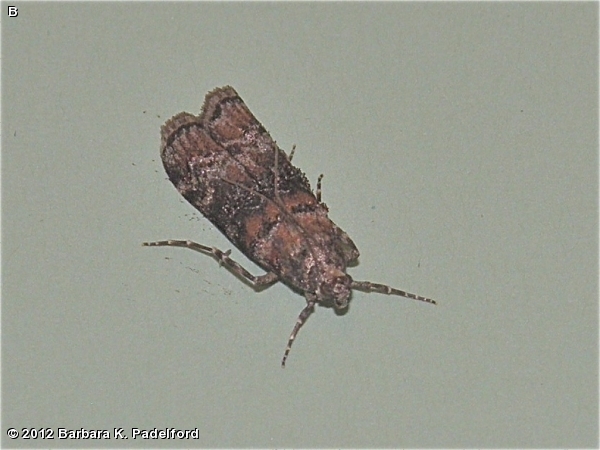
The Zimmerman Pine Moth has a wingspan of 1.75 inches. The forewing has a rosy tint overall with 3 rows of raised black scale-ridges. The hindwing is yellowish white. The legs are brown and tan striped. The larvae are dirty white, pink to green and are peppered with small, black spots. When mature they grow to .75 inch long.
The frequency of occurrence is not known. The moth shown here was photographed at Neale Woods coming to artificial lights in September 2012. The adults are rarely seen because they are weak flyers and hide in tree bark during the day. According to a Fact Sheet published by the Penn State Extension Service (Rayanne D. Lehman) this is primarily a northern species, but there is a small, isolated population occurring in eastern Nebraska.
The larvae eat the inner bark of Austrian and Scotch pines primarily, but will also attack any pine. Adults emerge in late June to mid-September. Eggs are laid under bark of the main trunk in late summer. After hatching the larvae move to a protected area, such as under bark scales, and spin a silken chamber (hibernaculum) in which they will spend the winter. They do not feed at this time. They leave the chamber the next spring and begin feeding on the inner bark of the main stem and terminal shoots. Before pupating, the larva chews away the wood to prepare a thinned emergence site for the exiting adult moth. The life cycle is usually one year. Generations overlap, so most stages can be found at anytime of year.
Disclaimer: The content of NatureSearch is provided by dedicated volunteer Naturalists of Fontenelle Forest who strive to provide the most accurate information available. Contributors of the images retain their copyrights. The point of contact for this page is: Babs Padelford.

